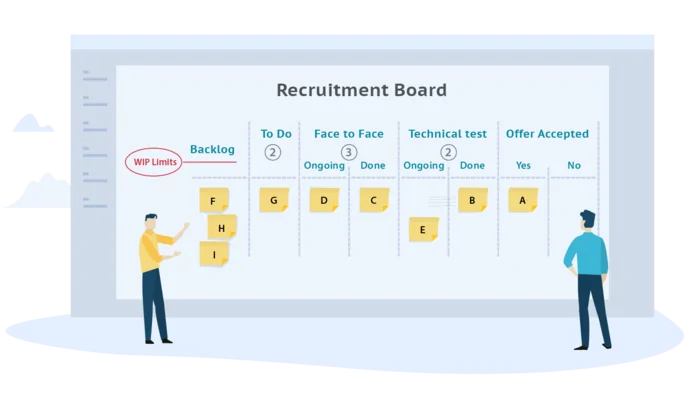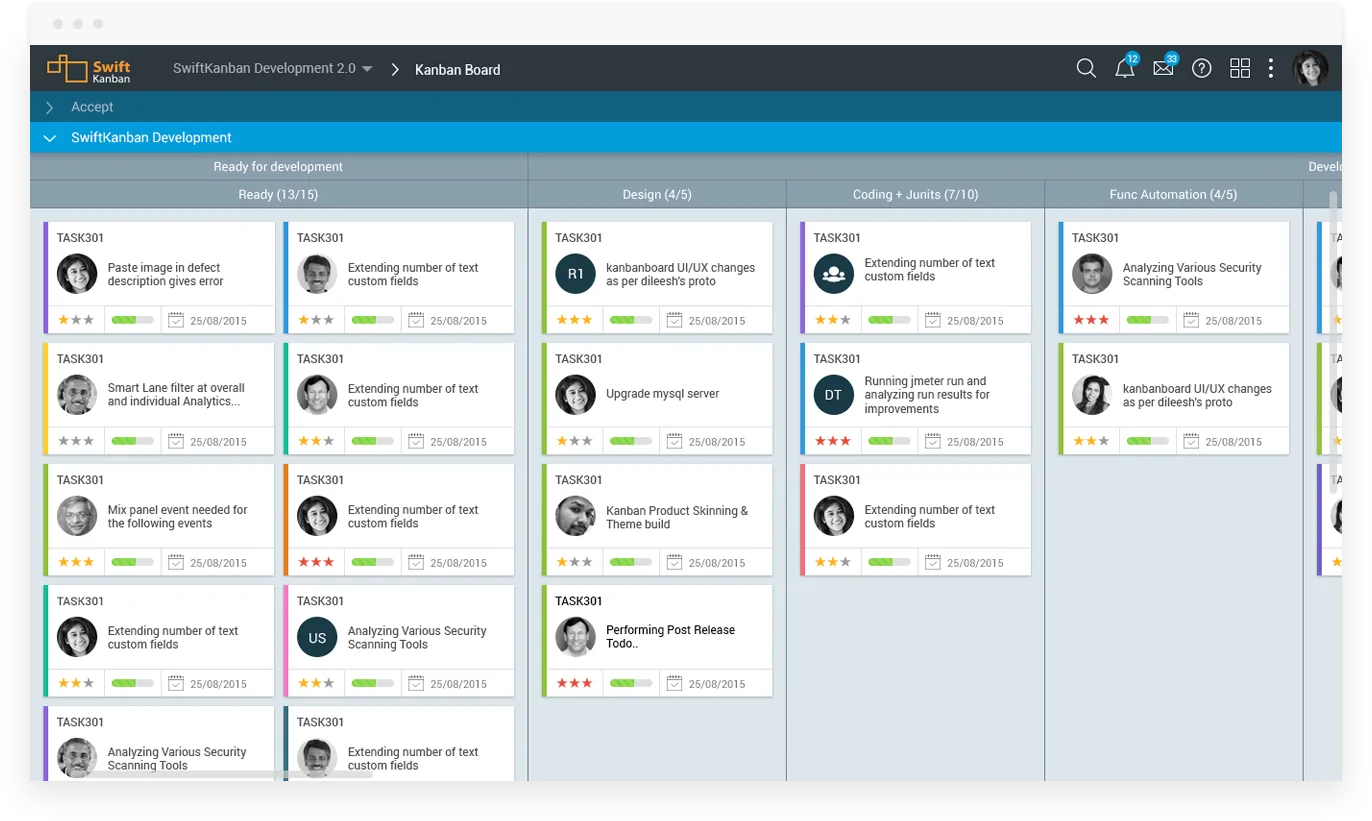In my Consulting role at Digité, I get to work with a lot of our customers who are implementing Agile/ Kanban. We typically engage with them when they are looking to consolidate – formalize, deepen and perhaps make more structured or organized – their Lean/ Agile journey till date. That is when they usually decide that they need a serious enterprise Agile/ Kanban tool to help them in their Agile Transformation objectives.
This may happen at a team level – many of our customers are just 1-2 teams who have worked with Agile or Kanban for some time – usually 6 months to a year. Quite often, though, it happens at a larger level – at a department/ business level or even at the Enterprise level!
Multiple teams or departments at an enterprise might play around with agile tools, and may have different tools for different teams. But at some point, when there’s sufficient momentum, they feel the need to consolidate a lot of the planning, execution and reporting and would like it all to be on the same platform. That’s when they decide to evaluate and adopt an enterprise agile tool. And fortunately, that’s when we get called in!
The “core team” that is charged with implementing a solution like SwiftEnterprise or SwiftKanban is usually the Lean/ Agile COE or the enterprise PMO. This team or organization is responsible not only for the tool implementation but has also been responsible for the lean/ agile transformation, training and coaching of all the teams that are to be covered under the transition. This is the team we engage with and help rollout the tool to the wider organization.
Different organizations do it differently – and depending on the organization size, culture and their own internal capacity, we get pulled in to supplement their efforts.
Even Evolutionary Change is subject to Fatigue!
Most change or improvement initiatives can be disruptive – and certainly, the typical Agile/ Scrum implementations can be quite a significant change for an organization. Teams must reorganize, change roles and titles, their work organization and hierarchy, their delivery cadences, you name it! It is no wonder then, that the people involved in implementing such disruptive change across the organization can suffer from fatigue and even trauma.
On the other end of the spectrum, Kanban is an evolutionary change method – and certainly regarded as much better than the “traditional” agile methods. With its focus on “start from where you are” and not changing any organizational structures, roles and responsibilities, Kanban certainly causes much lower fatigue or trauma. Teams simply visualize their work on a Kanban board, implement WIP Limits and Pull, to try and manage as well as improve their Flow of work. In that sense, Kanban is a very non-prescriptive method, unlike other Agile methods which are far more prescriptive.
However, despite the gradual – evolutionary – process of change – or perhaps because of it, as also because of its non-prescriptive nature, sometimes teams tend to feel a bit lost about what to do to “continue to implement” Kanban – to continue to implement a method which aims to improve their outcomes. Not knowing exactly what to do next can also cause stress.
“What’s the best way to implement SwiftKanban?”
So, when the team or the organization decides to adopt an Agile or Kanban tool, it becomes a perfect opportunity to “take stock of the situation”. More often than not, we are able to catalyze this by asking them questions about their Kanban implementation and the impact it was having on their organization.
The stock-taking can take multiple forms – tool training, post-implementation advisory calls, “office hours” or even a product reinforcement training. Sometimes, it might happen even 6 months after the team has been using SwiftKanban. At some point during such a session, someone from the team will ask the question –
The underlying questions can be many – “What can we do with SwiftKanban?”. “What kind of improvements can we expect?”. “What should we do first with SwiftKanban?”, and so on. Having been asked the question multiple times, and having assessed the situation in multiple contexts, I have usually recommended the following 4 steps to these teams, and in most cases, they have resonated quite well.
The four steps are quite straightforward –
- Get your team aligned to what problem(s) you are trying to solve. If there’s no perceived problem, then ask what/ how can you improve? Surely every team, every organization can improve!
- Once you know what you want to fix or improve, measure where you are currently at. Based on multiple discussions, it would appear that there are 4 common metrics that are a good starting point – Lead Time Distribution, Lead Time Control, Throughput and Flow Efficiency.
Monitor these 4 metrics for a sufficient period of time – at least 4-6 weeks – and see if any of them don’t measure up.
- Perform Root Cause Analysis for the metrics that aren’t satisfactory. Find out what are the contributing factors for those metrics to be unsatisfactory. Identify the causes and discuss within the team how to make changes to your process and policies about what can be done to fix the issues that hold back that metric.
- Carry out the fixes/ changes – and monitor/ measure again. Rinse and repeat!
Find your Purpose!
More often than not, these simple steps have yielded rich dividends for the teams who have taken a disciplined approach to doing this on a continuous basis. It has helped provide clarity in the early stages of implementing SwiftKanban (or SwiftEnterprise). It has helped them focus on specific, business-critical measures.
Most importantly, it has given the team a sense of purpose – both in terms of adopting a new tool, and in terms of alignment of one or more objectives around what and where to improve! This then further reinforces the need to use the tool in a more organized and disciplined manner. This results in better and higher quality data, that provides them greater ability to analyze their work and identify other opportunities to improve.
Overall, this process reinvigorates their Kanban implementation and provides them a greater sense of purpose and achievement.
Mahesh Singh
AKT/ KCP, Head of Consulting
—
We have described this process in detail in this whitepaper – “4 Steps to Revitalize your Kanban Implementation”. If you’d like to learn more about this process and how you too can benefit from it, you can download it HERE!









